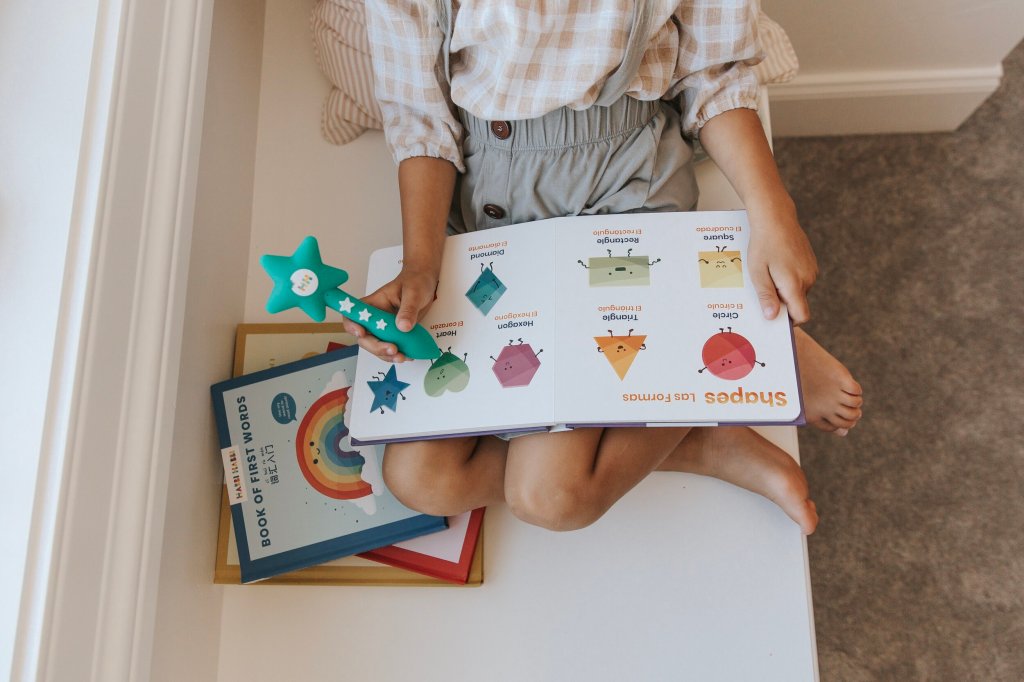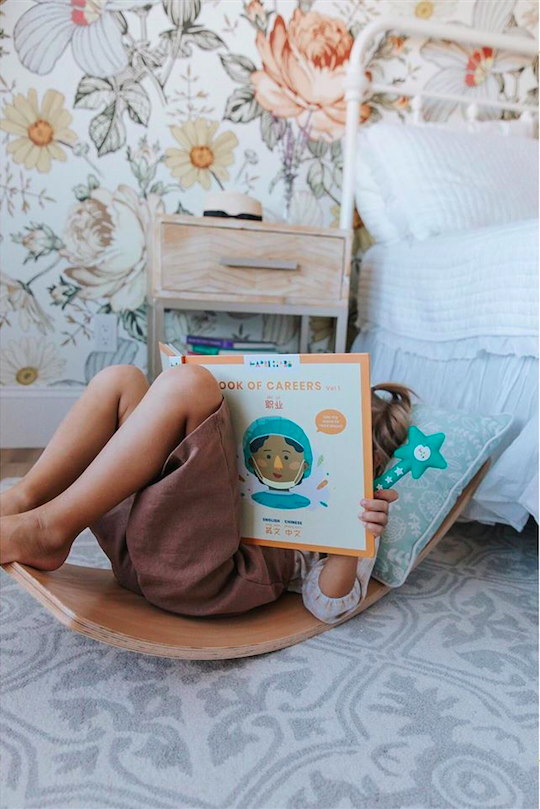
Mandy Chen, a private tutor, creator of ‘Fun with Joy Mandarin,’ and co-host of ‘Chinese Tea podcast,’ has experience teaching kids of all ages—from younger than one year to high school. Given the current environment and interest in home education, she’s sharing her tips on how to structure bilingual learning at home—practical ideas that don’t require formal tutors or teachers.
How do you structure bilingual learning at home? How does one start?
“The most important element I think is consistency. Even just 30 minutes a day works—as long as it’s consistent. Of course if you have more time, great. But consistency is key.”
As far as the structure goes, I would break it down into 3 simple categories—choose any order you want:
-
Singing and dancing: This could involve anything from nursery rhymes, movie theme songs, pop culture songs, and even topical coronavirus songs going on now.
-
Storytime: This could be 1 book or 2 books … it doesn’t matter. It can even be the same book, for young children where they want to repeat the content to learn and remember it. For parents who don’t speak Chinese, there is an increasing number of sound/reading wand/robot products on the market now to help.
-
Interactive activity: This could be something like tracing, arts & crafts, or games.
If the session is only 30 minutes, does this mean each activity is 10 minutes? Is 10 minutes too short?
“No, as long as you keep it consistent. I don’t think it’s too short. Realistically, the hardest thing is to be consistent, and that’s the most important. Similar to exercise, if you can just keep a regular routine of 30 minutes a day, that is terrific.”
The activities sound like they require a lot of parent engagement. Is it possible to be more independent? Or is that unrealistic?
“It’s possible for the kids to learn independently. For the singing/dancing, you can just play it on youtube—that doesn’t mean you have to show them the screen—you can just play the audio. Of course, if there are actions or dancing paired with the song, that might be helpful for them to see so they can join along.
For storytime, there are so many products and sound books available—products like Habbi Habbi that allow kids to try to read by themselves. There are also products that can play themselves (like books on tape or those robot toys that have pre-recorded stories or music on them). You can even find bloggers who read Chinese stories or are conducting virtual storytime on Youtube.
For the activity, there are activities kids can do themselves like simple word tracing, pairings, or puzzles. You just need to print it out, and they can color the word.”
A lot of young kids have short attention spans. What activities, based on your experience, work well for kids?
“I’d suggest building off something they love—a favorite toy, LEGOS, for example, can be used to build 2D or 3D Chinese characters! Integrate the activity with that toy. Also, young kids with short attention spans often have a hard time sitting still because they want to move. So you might integrate the Chinese activity with movement, for example, dancing with the song.
Every kid is different in what they like and what holds their interest. I’d suggest parents try different types of activities and for whichever one that sticks, continue to do more of that activity, with different content.”
We’ve discussed ‘basic exposure’ types of activities. What if you want to go a little bit deeper?
“There are other activities that can be more involved but are also fun. Fun is important because it’s so important to make sure language learning holds their interest and is not a chore. Some example activities include a Chinese art wall or poster, building their own illustrated Chinese dictionary, or writing their own Chinese story.”
When they create a story, would they write it or speak it?
Either! It depends on their capability. If they can, I’d encourage them to write it. I’d also encourage them to make their own illustrations. Kids love imagining and building characters, their stories, and the setting.”
Speaking of writing vs speaking, young parents are often focused on teaching speaking because it’s more approachable. How do you even start to think about writing, in a way that doesn’t feel like memorization or worksheets?
“Start with simple characters, with fewer strokes like 人 or 天. And just like English that starts writing with tracing, you can just start with tracing or coloring the characters. Start with 50 characters, a simple list, and go from there. In my experience, kids think Chinese characters are fun because they look more like drawings than words, so they enjoy coloring them. You don’t have to just focus on pencil tracing, it can be coloring with crayon and markers or even using materials like Playdoh and pipe cleaners.”

















